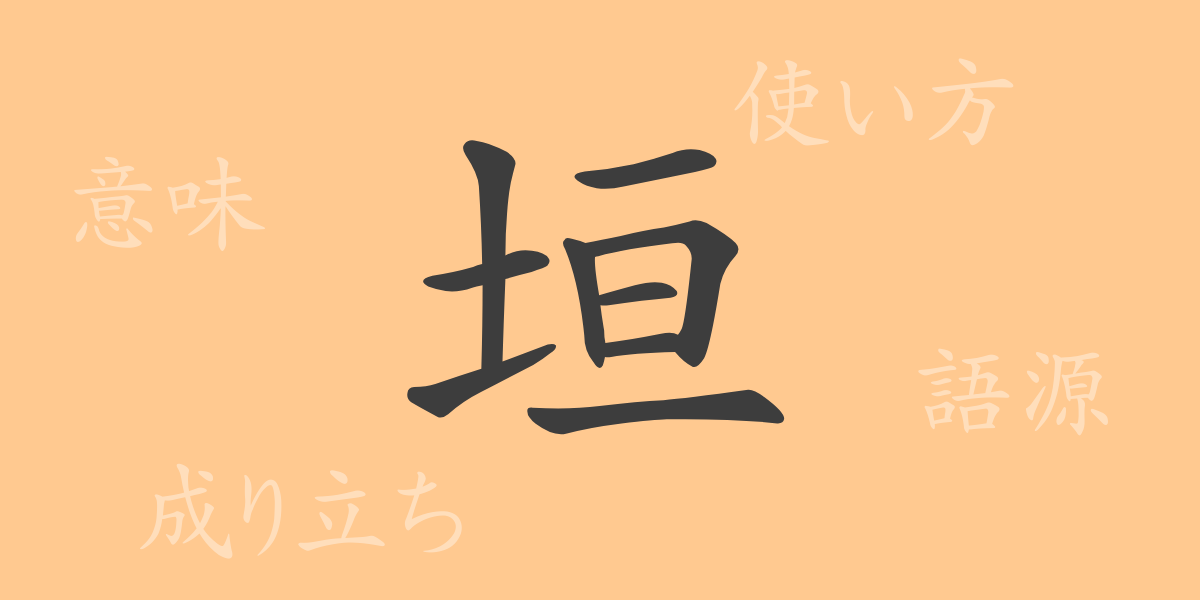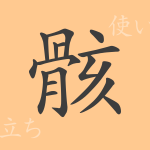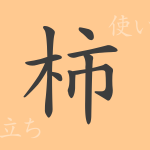The Japanese language is rich with a multitude of kanji characters, each carrying its own unique history and meaning. Our focus today is a deep dive into the kanji “垣” (Kaki), a character commonly seen in everyday life yet whose background and diverse applications are not widely known. This article will explore the etymology of “垣” (Kaki), its meanings, usage, pronunciation, number of strokes, radical, and extend to phrases and idiomatic expressions that include it, providing a comprehensive explanation.
The Origins (Etymology) of 垣
The character for “垣” (Kaki) can trace its origins back to ancient Chinese oracle bone script. It was originally used as a pictograph to represent walls or fences built from piled-up soil. Over time, this character evolved to denote fences or enclosures made from earth and wood, and it became established in the culture of East Asia, including Japan.
Meanings and Usage of 垣
“垣” (Kaki) is primarily used to denote words such as “fence,” “wall,” or “hedge.” It can refer to a hedge used to enclose houses or gardens, and metaphorically, it is also applied to describe barriers or obstacles. In Japan, “垣” (Kaki) plays an important visual role as part of the landscape or to demarcate private property.
Pronunciation, Number of Strokes, and Radical of 垣
While the kanji “垣” (Kaki) is simple, it occupies a significant place in the culture of writing in Japan.
- Pronunciation: On’yomi (Sino-Japanese reading) is “えん” (En), Kun’yomi (native Japanese reading) is “かき” (Kaki)
- Number of strokes: 9 in total
- Radical: Earth radical (Tutihen)
Phrases, Idioms, and Proverbs Using 垣
There are numerous idiomatic expressions, proverbs, and compound words that include “垣” (Kaki) in the Japanese language. For example, “垣間見る” (Kaimami-ru) literally translates to “peek through a hedge,” but figuratively, it means “to glance at” or “to catch a glimpse of just a part.” The expression “垣根が高い” (Kakine-ga-taka-i) is a familiar idiom that conveys a sense of distance in human relationships.
Summary on 垣
Through this article, perhaps you have gained an appreciation for the multifaceted nature and rich history of the kanji “垣” (Kaki). “垣” (Kaki) represents more than just a character; it is a symbolic presence that affects our environment, culture, and even human relationships. Deepening our understanding of “垣” (Kaki), a common kanji character in Japan, is a step towards enriching our communication through language.

























